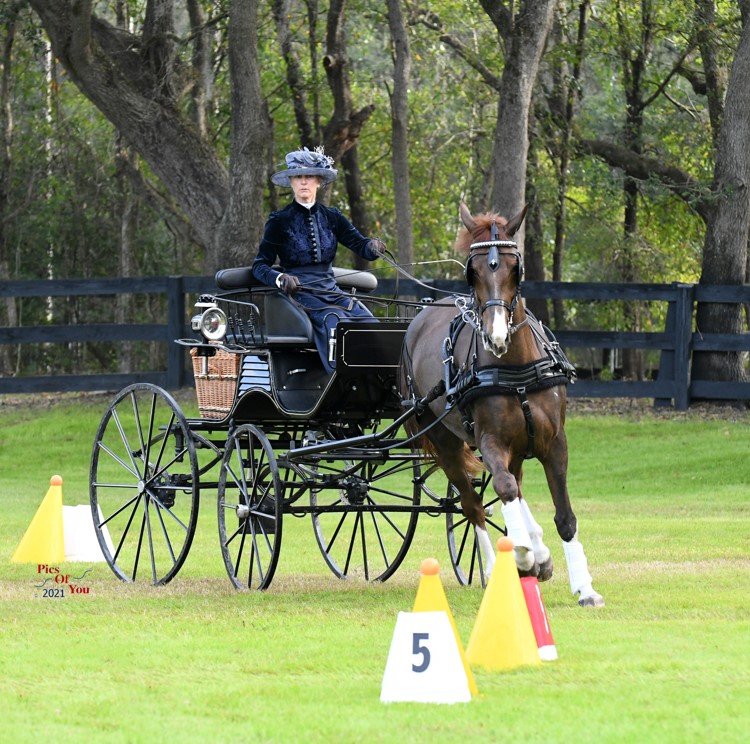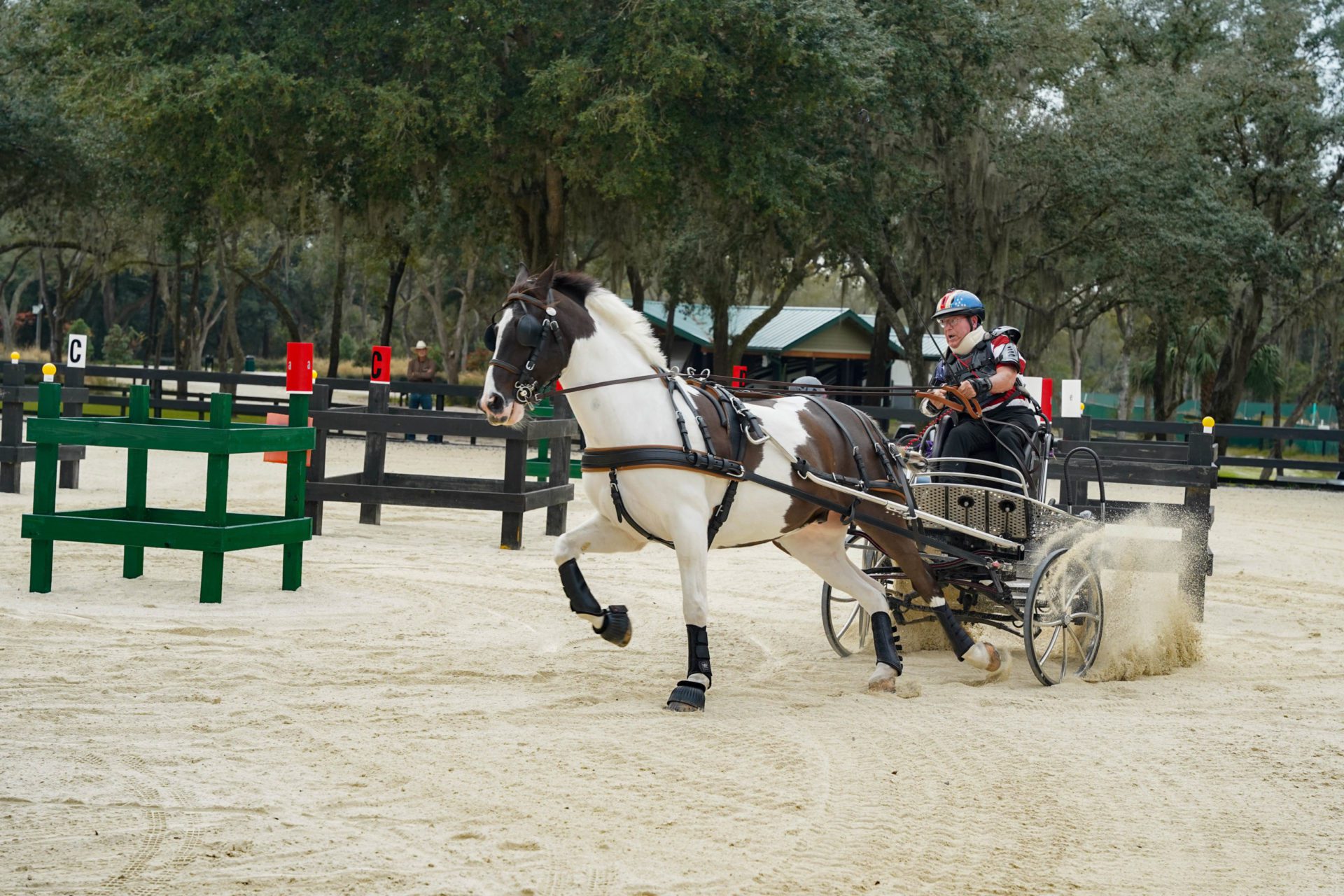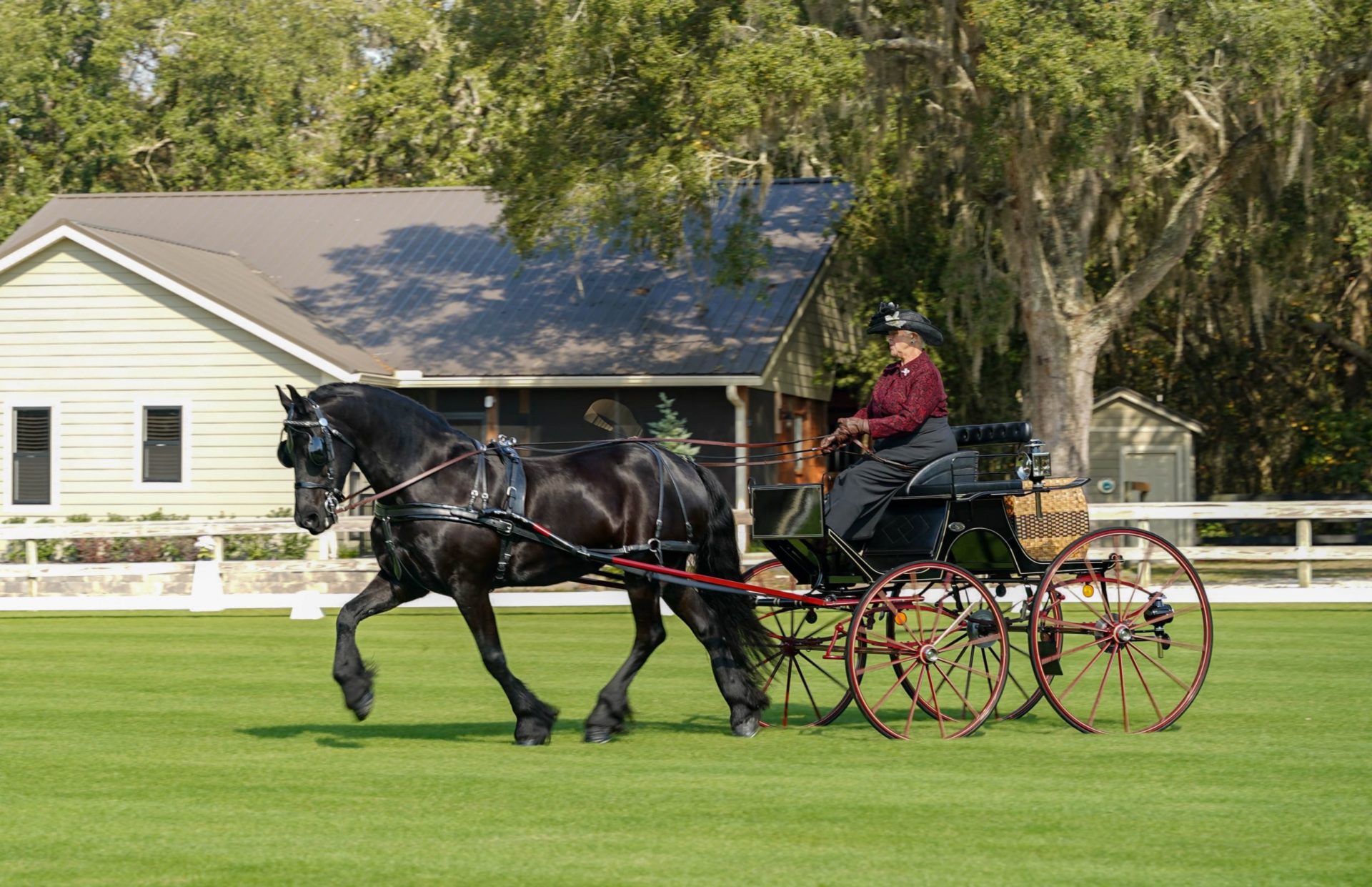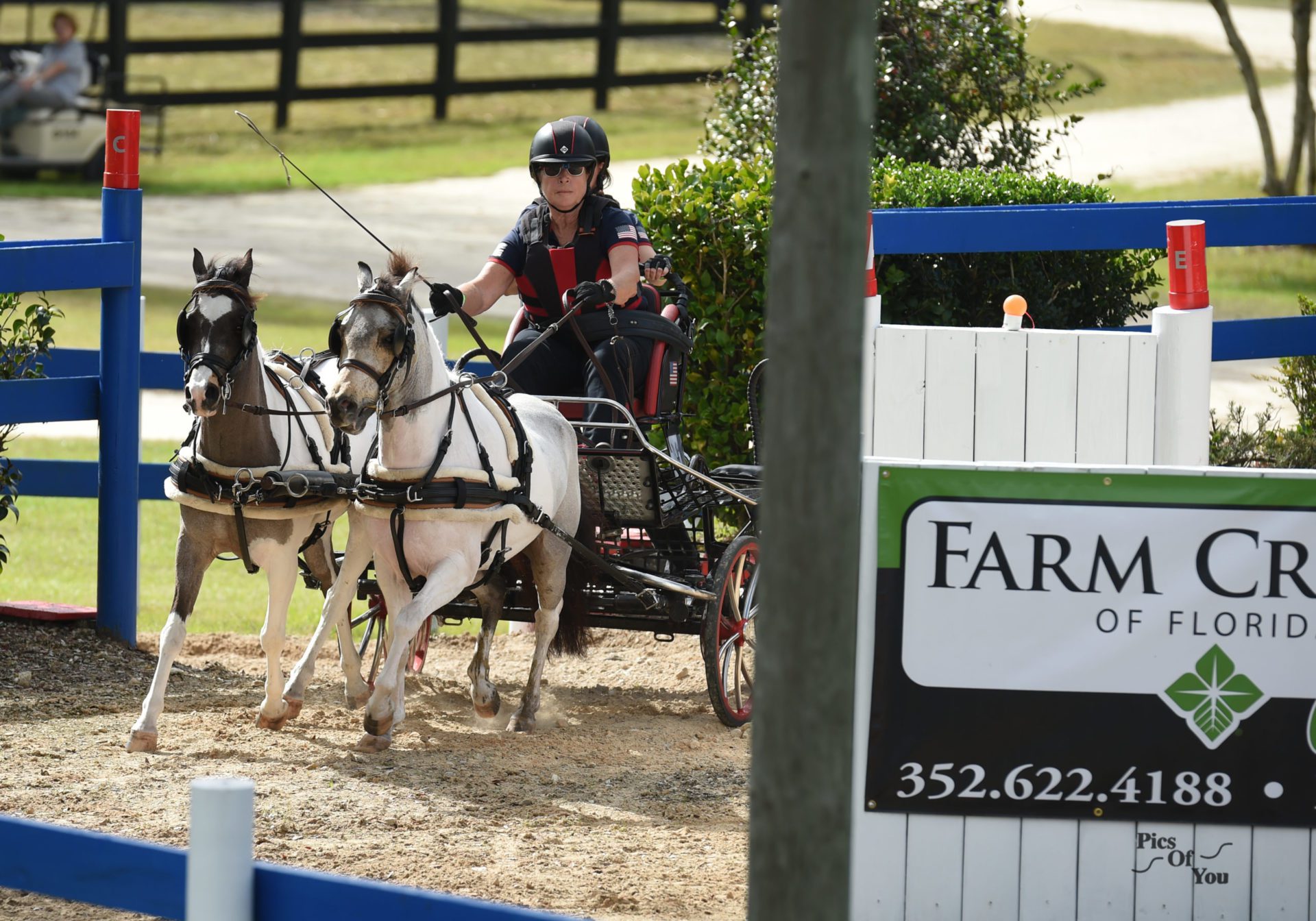For those who are not involved in the sport of combined driving, a horse-drawn carriage is usually imagined as something from an era before automobiles, or as a novelty holiday ride through the city.
However, carriage driving has existed for centuries as a mode of transportation and remains both a competitive sport and a pastime to this day. Carriage driving usually involves a two or four-wheeled carriage, sometimes called a cart or a vehicle, that is pulled by a single horse or team of horses. These teams are made up of two, three, or four horses in most competitive sports, but can be much larger for demonstration purposes. One of the most well-known large demonstration teams is the impressive Budweiser Clydesdale team of eight. Equines of all sizes can participate in carriage driving, from very small miniature horses all the way to large draft horses. If driving multiple equines, they must all be of a similar size in order to pull effectively.
The most popular format of competitive carriage driving is the combined driving event (CDE). The American Driving Society website describes a CDE as “Sometimes likened to a team triathlon, a Combined Driving Event consists of three competitions – Dressage, Marathon, and Obstacle/Cones — that are held over one, two, or three days. The sport is intended to showcase the versatility, training, and talents of both horse and driver.”
Three Phases of a Combined Driving Event
Driven Dressage
Driven dressage is where the horse(s) and driver complete a pattern and are judged on precision and quality of movement. The dressage pattern may include circles, figures of eight, and crossing the diagonal at a walk, working trot, collected trot, extended trot, canter, halt, and rein back. The horses are judged on their obedience, rhythm, elasticity, and harmony of their movement. The ideal dressage test looks effortless.
Marathon
Marathon is a test in speed and endurance; competitors cover between eight and eighteen kilometers and negotiate challenge “obstacles” every kilometer or so, in which they choose their paths to go through “gates” in the correct direction and sequence. It is important to note that the marathon phase is not a race, competitors are given a window of time to complete their course. Both times that are too fast and those that are too slow are penalized. This is the most exciting phase to watch as a spectator and can draw crowds at large events.
Cones
Cones is a test of agility and obedience where the driver carefully navigates between 20 cones with small balls balanced on top. The cones are set at distances only a few centimeters wider than the carriage wheels, and the driver will be penalized if any of the balls are dislodged from the cones. This phase is timed, and additional penalties are given to those who take longer than the allotted time.

The CDE is scored based on penalties. The team with the least penalties from all three phases wins the event. The dressage score sets the base score, and from that point, penalties can be added (but not removed) in the marathon and cones phases. This scoring system means that there is a great deal of emphasis on proper training in the dressage phase.
Beyond its importance in CDEs, driven dressage is also a competitive sport on its own. This fall Black Prong Equestrian Village is hosting the inaugural Black Prong Dressage Festival, which will focus solely on driven dressage.
A shortened format of the CDE is the Combined Test (CT), which incorporates the dressage phase and either the marathon or the cones phase into a one-day competition. At Black Prong our CT series is made up of dressage and cones.
Driving derby is another sport that is based on the CDE. A driving derby is an event that combines the marathon and cones phases into one course that has both types of obstacles. This is a timed competition, so the lowest time without penalties wins. Drivers navigate through both marathon obstacle gates and cone gates at speed.

The derby and combined driving events are fun to watch and are open to spectators! At Black Prong, our driving events are held outdoors with lots of room for safe distancing and follow the American Driving Society covid-19 guidelines. For spectator information please visit the event page and click on the specific event you wish to watch.
Nov 17 Combined Test
Nov 18 Driving Derby
Dec 8 Combined Test
Dec 9 Driving Derby
Dec 29 Combined Test
Dec 30 Driving Derby
Jan 14–16 Nature Coast CDE & CT
Feb 11–13 Black Prong Dressage Festival
Feb 23 Driving Derby
Mar 9 Driving Derby
Mar 18 – 20 Black Prong CDE & CT
Mar 30 Black Prong Derby Finals

